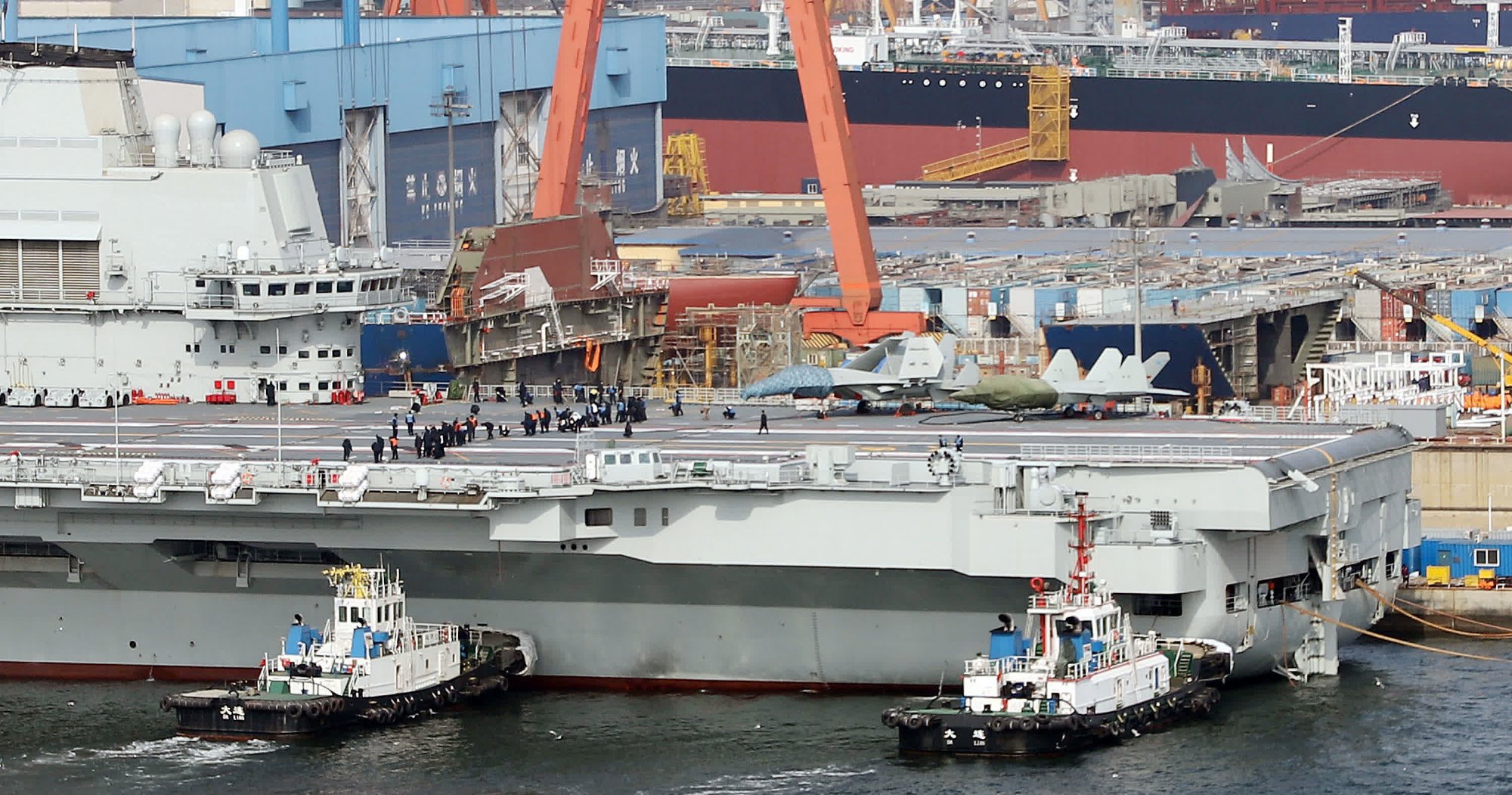Weeks after the appearance of a mockup of the J-35 stealth fighter on the flight deck of the Liaoning aircraft carrier, new photos and videos have surfaced, revealing the Liaoning embarking on a sea journey with mockups of both the J-35 and a J-15 jets situated at the rear of the deck.
The visuals, initially posted on the Chinese microblogging platform Weibo, gained widespread attention on X (formerly Twitter) on February 29.
This marks the culmination of nearly a year of maintenance and upgrades on China’s first aircraft carrier, the Liaoning. The carrier is now poised to embark on its first sea trials after the completion of the overhaul process.
Rupprecht Deino, a researcher specializing in Chinese military aviation, posted a photo of the Chinese aircraft carrier with onboard mockups, along with a caption noting, “The PLANS-16 ‘Liaoning’ left Dalian for its first sea trial after about one year of maintenance and modifications.”
The development suggests that deck-handling trials continue as the refurbished warship ventures out to sea. The presence of the J-35 and the new J-15 variants on the Liaoning also implies China’s intention to deploy these aircraft on its first two carriers.

A report by Eurasian Times last month pointed out that the sighting of the J-35 mockup on the Liaoning hinted at the possibility of the stealth fighter being deployed on China’s first two carriers, both lacking catapults.
Originally, expectations were that the J-35s would be designated for China’s next-generation carriers, which would utilize catapults instead of the ‘ski jump’ ramps for aircraft takeoffs.
The PLAN’s first two aircraft carriers, Liaoning and Shandong, primarily deploy J-15s for aerial missions. These planes are derived from the Russian Su-33 Flanker carrier-based fighter but have undergone modifications by Chinese engineers to enhance their engines, avionics, and armament systems.
The latest visuals also exhibit a mockup of a J-15 on the Liaoning. Although the standard J-15 is already a part of China’s operational carrier’s air wings, the mockup could fulfill various roles, including continual training and providing insights into how the aircraft operates alongside the J-35 on the flight deck and within the hangar.
Reports have also suggested that the featured mockup could potentially depict an updated iteration of the J-15. Although obscured by a tarp in the new images, the shape of the cockpit hints at the likelihood of it being a two-seat derivative.
There have been developments regarding a two-seater variant known as the J-15S, although its exact purpose remains undisclosed. Some sources propose that it might serve as a carrier-based trainer.
How China’s J-35 Fighter Could Bolster Its Carrier Operations?
China’s development of the J-35, its second fifth-generation fighter jet, has garnered significant attention as it seeks to bolster its aircraft carrier capabilities.
Designed by the Shenyang Aircraft Corporation, the J-35 is tailor-made for aircraft carrier use and is positioned as the Chinese counterpart to the Lockheed Martin F-35.
The J-35 was first unveiled as a scale model at the Zhuhai Airshow in 2012. Since its unveiling, the aircraft has been undergoing rigorous development and prototype phases. However, the new images indicate that the jet is reaching the crucial stages of its testing, raising expectations of its integration into the People’s Liberation Army’s (PLA) air force.
Collin Koh, a senior fellow at the S. Rajaratnam School of International Studies in Singapore, recently pointed out, “One most straightforward assessment is that the Liaoning, which has long been designated as a test bed for PLA carrier capabilities, is conducting experiments on the J-35 as a viable carrier-borne fighter jet.”
Koh also emphasized the effect of showcasing the J-35 mockup openly, particularly in light of international scrutiny and possibly directed toward the United States.

Nonetheless, upon integration into the People’s Liberation Army, the J-35 is expected to complement the existing fourth-generation J-15 fleet on the Liaoning and Shandong carriers.
Chinese experts quoted by Global Times anticipate the J-35 to focus on air superiority and penetrating hostile defenses while the J-15 continues its role in carrier groups, leveraging its substantial payload capacity for anti-ship and attack missions.
Due to its medium size, swapping out the heavier J-15s for the J-35 could potentially increase the number of J-35s accommodated on the carrier, thereby enhancing its operational flexibility.
The combination of the J-35 and the J-15 is projected to significantly enhance Chinese carrier capabilities. This advancement underscores China’s strides in naval aviation and its evolving role in maritime security dynamics.
- Contact the author at ashishmichel(at)gmail.com
- Follow EurAsian Times on Google News




